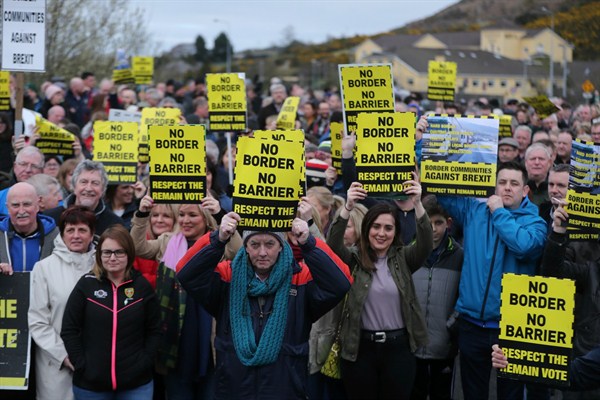NEWRY, Northern Ireland—One of the main attractions at the local museum in Newry, a bustling market town some 40 miles south of Belfast, is an old wooden sign. Painted on a chalky white background, its tall red letters proclaim in Irish, then in English: “Custaim: Stad, Customs: Stop.”
For decades, this sign stood on the road between Newry, in Northern Ireland, and Dundalk, in the Republic of Ireland, demarking the twisting, 500-kilometer border between the two countries. The sign was taken down when Ireland and the United Kingdom joined the European Union’s single market in 1993. By the time the Good Friday Agreement was signed in Belfast in 1998, it was easy to forget the border even existed.
The Good Friday Agreement brought the decades of sectarian violence known as “The Troubles” to an end, and with it all the checkpoints along the border. Mostly fought in and around the border’s thick hedgerows and narrow lanes, the conflict—involving Catholic Irish nationalist paramilitaries, Protestant British loyalist paramilitaries, the British army and the Northern Irish police—left some 3,532 people dead between the late 1960s and the late 1990s.

